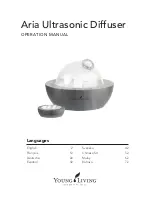
The positions shown in Figures 4 & 5 are just starting points and may
require adjustment for optimal performance. Each motor does not need
to be set at the same distance from center, but they should not be more
than one setting apart.
Feel free to experiment and deviate from these suggestions to determine
the optimal wheel gap for your situation. For example, cold weather will
cause both the balls and wheels to harden, requiring a larger wheel gap
than when the same machine is used in hot weather. Also, once the
wheels begin to wear, they will need to be moved closer together to
compensate.
OPERATION
SPEED CONTROLS
The wheel speeds are individually controlled
by rotary knobs. Both the knobs and the motors are labeled '1' and '2' to
keep track of which motor is controlled by which knob even if the
machine is rotated upside down. Because softballs are heavier than
baseballs, actual softball pitch speed will be 15% slower than indicated.
ADJUSTING MACHINE ORIENTATION
The machine is
positioned using 3 different clamping handles: horizontal, vertical, and
twist angle. The horizontal and vertical pin joints are used to aim the
pitch while the twist angle is used to change the direction of ball spin and
therefore ball curve. When using the machine for defensive drills, the
horizontal and vertical pin joints can be left loose to let the machine
swivel freely, but the twist angle should always be locked during use to
prevent accidental movement.
Each joint is locked by turning the clamping knob clockwise until tight. To
adjust the machine, grasp the machine's ball ended aiming handle and
turn the clamping knob counterclockwise until the joint is loose enough to
move. The machine can then be rotated to the desired position and the
joint locked back in place.
Be sure to grab the aiming handle before loosening any joint to keep the
machine from rotating under it's own weight. The best practice is to
loosen the joint just enough that you can adjust the machine with a little
effort, but not loosen it enough that it can flop around on its own. For
small horizontal adjustments, it is often easier to rotate the entire
machine instead of adjusting the joint, but it is a matter of personal
preference.
When the machine is inverted, it may be necessary to move the aiming
handle to the other hexagonal base so that it clears the rest of the
Rawlings Pitching Machines






























